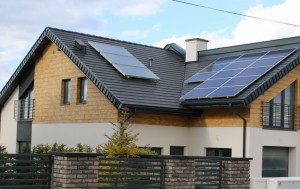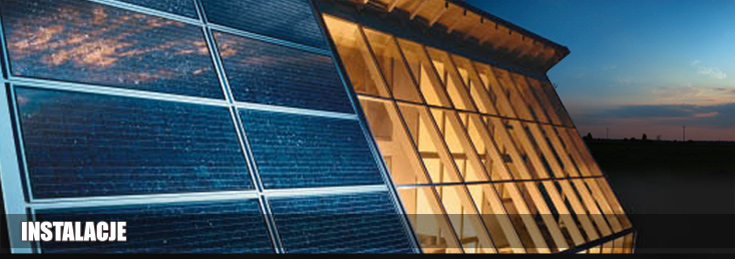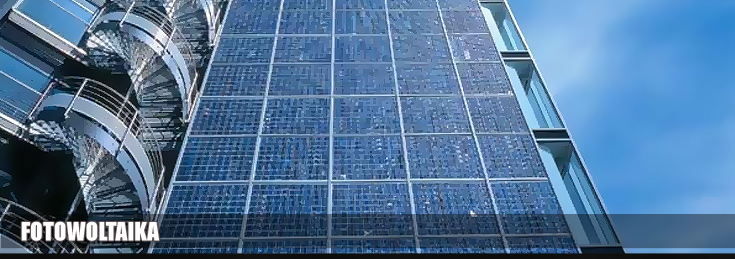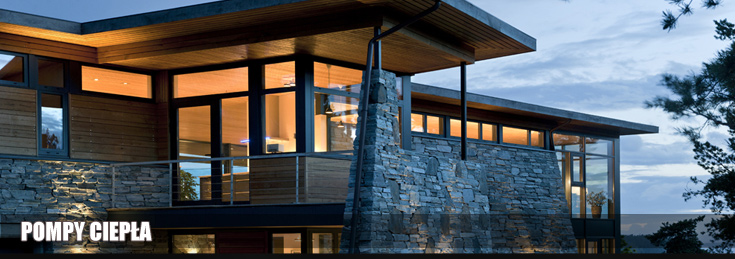 The use of solar energy and geothermal energy accumulated in the soil is a brilliant option now, more than ever. This is a combination of respecting ecology and saving money. During the current era there is a global recognition of the depletion of natural resources and the increase of cost to produce electricity. The Earth itself seems to suggest solutions that we can derive the needed energy at the same time caring for the environment. Given our current capabilities, we are able to connect more than one source of renewable energy. The simultaneous production of electricity, heating of rooms and heating water by using renewable energy sources gives us independence and security. Therefore, the increased amount of heating fuel and energy costs are more compatible.
The use of solar energy and geothermal energy accumulated in the soil is a brilliant option now, more than ever. This is a combination of respecting ecology and saving money. During the current era there is a global recognition of the depletion of natural resources and the increase of cost to produce electricity. The Earth itself seems to suggest solutions that we can derive the needed energy at the same time caring for the environment. Given our current capabilities, we are able to connect more than one source of renewable energy. The simultaneous production of electricity, heating of rooms and heating water by using renewable energy sources gives us independence and security. Therefore, the increased amount of heating fuel and energy costs are more compatible.
OPTIMA POLSKA has designed an innovative installation, in a detached house, combining in one system solar collectors, photovoltaic panels, a heat pump and recuperators. Collectors heat the water by converting solar energy into heat. Thanks to photovoltaic panels, the electricity is generated, which is also needed to operate the heat pump compressor. The pump recovers the heat from the ground and heats the house; the device obtains the highest effectiveness with the installation of underfloor heating. The recuperator recovers heat from the ventilation, the device heats up the air entering the house by air which flows out of the building. In addition, the house has been equipped with an integrated automatic control system: heating, cooling and ventilation, and domestic hot water managed by renewable energy acquisition. The applied solution flexibly adapts to the individual users’ requirements. You can add another element at any time and constantly expand the management system along with the growing needs and the increasing number of devices at home.
The precise data of this project:
– heat pump with a capacity of 8 kW,
– buffer (800 l) with a stainless steel coil for DHW,
– 6 radial bores in a loamy soil made in the GRD technology, each with a length of 50m; the use of coaxial probes filled with thermal cement,
– 3 flat solar collectors with a surface of 2.5m2 each,
– heating floor with a design temperature 36.6°C at an outdoor computational temperature -22 ° C,
– air handling unit with a heat recovery unit,
– photovoltaic panels with a total capacity 3.4kW,
– Building Management System (BMS) – “smart house” control:
- lighting control:
– the possibility of switching on/off the lighting in a “traditional way” in every room,
– the possibility of switching on/off the whole lighting from anywhere in the house,
– the presence simulation of residents during their long absence,
– switching on/off the external lighting on programmed dusk time,
- heating control:
– temperature sensors in each room; individual temperature settings,
– calculation of heat demand according to external temperature / weather forecast,
– calculation of demand for domestic hot and selection of the most economical source,
- ventilation control:
– heating algorithms combined with ventilation algorithms,
– radical reduction of ventilation in the absence of household,
– intensification of ventilation during a sudden rise in temperature / CO2 / humidity,
– intelligent manipulation of by-pass in transition periods,
– the automatic air extraction while using the toilet,
- other BMS options:
– access to all settings on the local network or the Internet,
– the collection of measurement data from energy/heat meters,
– the management of solar heating system, heat pump, recuperator and heating
- other controller functions – unused, but possible:
– automatic watering,
– controlling of blinds.
System action:
Heat generated from all sources is accumulated in the buffer, which acts as a heat energy store for central heating and also provides domestic hot water. Pump efficiency (COP) varies between 4.5 and 5.0, in other words per 10 kW thermal energy provided by the heat pump 2 – 3 kW electricity is necessary. The heat pump achieves maximum efficiency in a range of low temperatures (40°C). The collectors, meanwhile, can achieve much higher temperatures of 85°C. At full sunlight they can deliver 7500W power while consuming about 30-40W of electricity. The solar collectors perform the same function as a heat pump, but their work depends on the sunlight.
Photovoltaics work independently of the heating system. Direct current produced in the panels is processed in the inverter into alternating current (230V/400V). It covers part of the building’s annual demand for electricity.
The air handling unit in the building provides clean fresh air, and ventilation loss is minimized due to the energy recovery device in the recuperator.
For proper operation of the whole system, it is also necessary to program the correct management of sources; that is, setting priority for needs of the residents and energy receivers’ control. These tasks are implemented by Building Management System (BMS). This system can analyze the demand for heat and at the right time is able to turn on/off the source. BMS also collects data about the heating devices and the amount of used energy, so that the individual sources are activated only when they’re necessary.
In the building all devices are powered by electricity. The heat pump does not require a special room – it stands in the garage. The entire installation is completely maintenance-free. Additional advantages are: maintaining cleanliness, the lack of need for the storage of fuel, reduced emission of pollutants, and thus increased protection against global warming.



